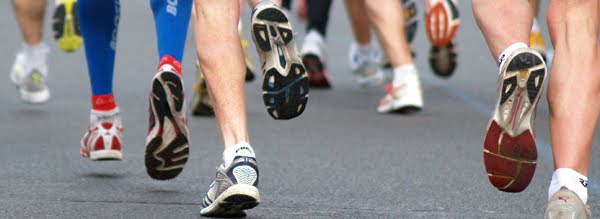Hydration and Supplementation of Key Electrolytes
for the Endurance Athlete
by Coach Todd Parker, M.A., M.S.
Countless times each season, athletes inform me
“I had a great race until I cramped up”, or
“I was racing phenomenally until I “bonked"!”
These experiences occur with elite level athletes as well as the beginner.
What areas of hydration and supplementation could be derailing your potential breakthrough racing performances?
Hydration during training and racing.
The typical endurance athlete (assuming they are beginning in an adequately hydrated state) has a sweat rate (or loses water) of approximately 50 ounces (1.5 liters) per hour. An athlete performing at a moderate to high intensity, may be losing somewhere between 32 – 64 ounces (2-4lbs.) an hour.
The 165lb. (75kg) athlete, can easily loose 2% of their bodyweight per hour.
Without adequately replacing a sizeable portion of this loss, significant performance decline will begin to occur.
If your hydration rate is just barely enough to stave off a noticeable performance decline, then you’ll likely experience muscular contraction, cramping, or even dizziness issues late in the race.
If you’ve ever experienced any of these symptoms during training or racing, then you need to take a hard look at what your nutritional and hydration intake was over the previous 24 hours, especially the few hours leading up to the event.
Electrolyte loss.
You’ll often hear people comment, “it was probably an electrolyte deficiency”. Generally, that normally means one or more of what I call “the big four” are imbalanced.
The four key electrolytes that most often contribute to muscular spasms, cramping, and even locking up from a failure of the contract-relax cycle are; sodium, potassium, magnesium, and calcium.
Once an imbalance or deficiency surfaces by the symptoms just mentioned, other minerals and chemical bonds are broken away and diverted to rectify the imbalance. Subsequently, all of these series of “rescue attempts” result in diminishing returns of muscular contractile functions. Until adequate replenishment of water and these key minerals are back to a homeostatic or normal stable state, normal muscular contractions will be erratic or even nonexistent in the worst cases.
So what should the athlete do at the onset of calf cramping on the bike or run?
Hit the fluids hard and consistent for the following hour in hopes of getting things under control. Hard and consistent means a few good gulps of your beverage every 10 to 15 minutes - totaling a 16-20 ounce bottle within the hour.
Whether or not the cramping continues beyond that, continue this consistency until the training or racing is over.
“I got so caught up in the race, I forgot to drink Coach.”
I recommend having an alarm on your watch or heart rate monitor set to beep every 10 minutes. If this consistency doesn’t fix the problem, then we have to revamp our hydration and nutrition regimen leading up to and including race day.
Until you can eliminate these symptoms, you will have to continue to experiment with the volume and “strength” of your fluids during training. The best time to do this is during training that is at race intensity and distance, or "race simulation".
Once you find a product and intake level that works for you, stick with it, don’t alter things (i.e. mix concentrations beyond recommendations), and never ever try new products on race day!
Bottom line, if you’re experiencing symptoms of electrolyte imbalance(s), experiment with other products that have higher mineral content, as well as your intake volume and intervals - until you fix the problem. Otherwise, you’ll continue to fall short of your optimal performance potential until you do.
Train and race smart, and Hydrate that Body in order to meet your goals and expectations.
Good luck!
Coach Parker
(Next Coach's Corner -Tips on amounts of these electrolytes you should be looking for in products out on the market, and how intake changes as the endurance event gets longer and longer!)
Subscribe to:
Post Comments (Atom)

No comments:
Post a Comment